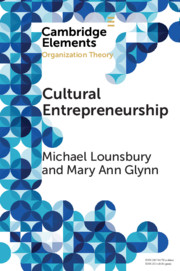Element contents
Cultural Entrepreneurship
Published online by Cambridge University Press: 13 January 2019
Summary
- Type
- Element
- Information
- Series: Elements in Organization TheoryOnline ISBN: 9781108539487Publisher: Cambridge University PressPrint publication: 24 January 2019
References
- 88
- Cited by



